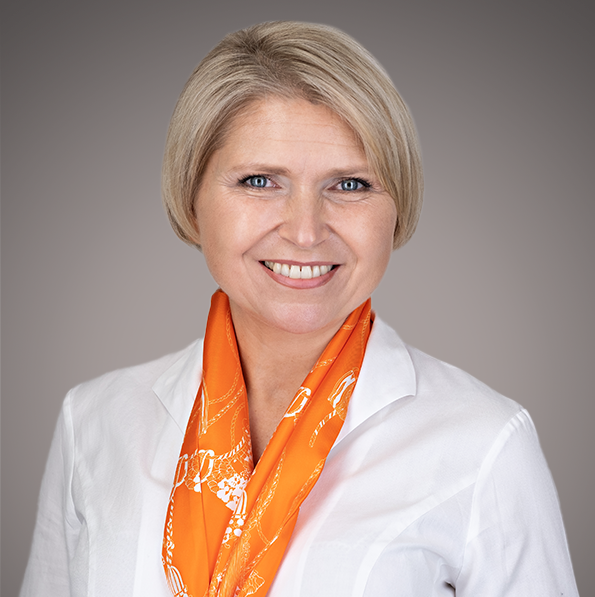Ilona Simpson joined Netskope as Chief Information Officer EMEA in January 2022. She joins Netskope from adidas, a multinational sportswear manufacturer headquartered in Germany, where she served as VP, CIO & Transformation Office. Prior to adidas, she held various technology leadership roles at EON, Aston Martin, DHL Supply Chain, and Porsche—including Regional, Divisional and Global CIO. In 2021, Constellation Research named her a member of the Business Transformation 150, an elite list that recognizes the top global executives leading business transformation efforts in their organizations. She is also a tech start-up investor and mentor, and acts as an advisor to various industry and technology boards.
I experienced firsthand how the CIO role has evolved over the past years. Technology functions in organisations have moved from “back office” to “internal solution provider,” with increasing aspiration to act as a “strategic technology partner” to the business. And an increasing number of boards and CEOs have realigned reporting lines of CIOs to the CEOs/Managing Directors. I was very fortunate to have reported to the CEO of Aston Martin and Divisional MD of DHL Supply Chain in the UK, and experienced firsthand the difference in quality of dialogue, being an equal member at the executive committee’s table.
How has the CIO agenda changed? Gartner put it very succinctly in the 2022 CIO Agenda, outlining three action areas for CIOs: “Composable thinking, composable business architecture, and composable technology.” All three of which boil down to a need for CIOs to think in modular ways in uncertain circumstances, emphasizing that the technology element of it means microservices, APIs, automation. Essentially, CIOs need to find the right balance between embracing evolving technology and what boards want.
But this is just the tip of the iceberg. A typical CIO dashboard (or OKR/Team Board—depending on how CIOs manage strategy execution in their organisations) would have 12-18 metrics across 4-6 categories. We find ourselves leading business-wide transformations to “product-led” structures whilst reducing OpEx (operating expenses); consolidating vendor estate; creating transparency and reducing complexity; driving cloud adoption; modernising ERP estate; investing in people and skills development… And last but not least ensuring governance, risk, and compliance (GRC) and working closely with CISOs/CSOs on providing optimal protection to the organisation.
The plate’s rather full, isn’t it?
And this is pre-2020. What we see now is the rising importance of employee experience, amplified necessity to protect the data, and increasing worries from both supervisory and executive boards around cybersecurity. The next step is tackling security transformation. Explosions in several areas of digital transformation are reshaping the business world and security transformation is vital to achieve and sustain the success of digital transformation efforts. Technologies like the cloud, the Internet of Things (IoT), machine learning/artificial intelligence (ML/AI), and analytics substantially improve business outcomes. If security can’t keep up, then that progress is at risk. Security must follow the data.
So whilst some years ago, CIOs could “pass on” cyber topics to the CISO or network teams in infrastructure (and I had a great privilege of working with some brilliant minds in both functions!), these days CIOs are getting increasingly involved. And this is the absolutely right way to go! As an anecdote, my first hire as a CIO of Aston Martin was the CISO. It was me going out, getting the buy-in of my peers on the executive committee, advocating for the role (and running into open doors!). Today, boards mandate cybersecurity reviews and supervisory boards are requesting updates on this topic from CIOs and CISOs.
I personally love learning from the best and working with the best. This is how I pivoted from my SAP consultant path at Accenture to become a process engineer at Porsche (who were named a number one employer by a leading German business magazine that year). This is why I chose IESE Business School for my Global Executive MBA (and consider it to be one of the best choices I’ve made), and this is why I have now joined Netskope. I did my due diligence reviewing various sources, including Gartner Peer Insights. Looking beyond the curtains of polished marketing, it became apparent that Netskope is head and shoulders ahead of any competition when it comes to technology.
In my first weeks at Netskope, I have spent a lot of time learning what modern cybersecurity looks like in real life, and that it not only doesn’t have to cost more but it also doesn’t have to be a burden. Knowing this, you would be shocked to learn that a significant number of enterprises are not adequately equipped. According to a recent MHP study, over 50% of German enterprises are yet to establish comprehensive risk management (and I am sure it is no different in most other parts of the Western world too). Modern communication technologies require a modern approach to security. My personal mission is to play a role in closing this gap. We need to step up our game! Being surrounded by the brilliant minds at Netskope who think ahead of where the vast majority of tech companies find themselves is a very humbling experience and a steep learning curve for sure! And it’s a rewarding one, too.




 Atrás
Atrás 





















 Lea el blog
Lea el blog